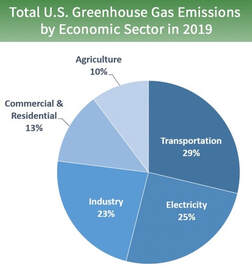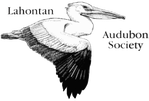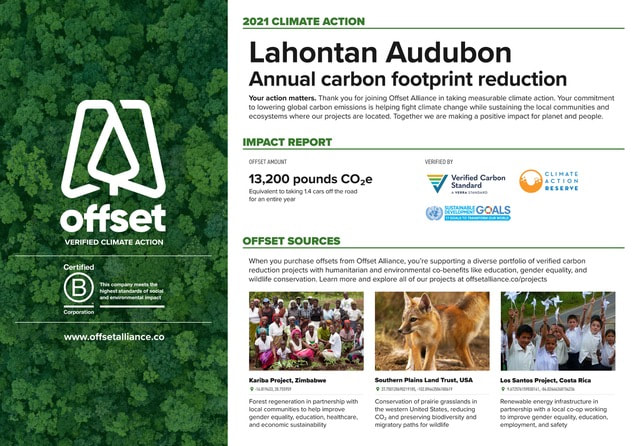|
By David Jickling  We all love birds, and we all love watching them. Whether it be at our backyard feeder or outdoors at a favorite location, birdwatching is what we love to do. At the Lahontan Audubon Society, we do our best to further your enjoyment of birdwatching by providing you with field trip opportunities and monthly programs designed to educate, inspire, and even entertain you. However, through our enjoyment of these wonderful creatures, we are all inadvertently contributing to the emission of greenhouse gasses that are warming the planet. Our warming climate is causing changes to the habitats birds have evolved to live in. Most of these changes are happening slowly, at least in terms of human generational scale. But on an evolutionary scale, these changes will likely have a much larger impact, and some species will adapt while many others will perish. As conscientious inhabitants of this planet, all of us are struggling with questions about what we can do as individuals to help stem the tide. There are lots of things we can do to help, and one we often don’t think about is simply driving less. Greenhouse gas (GHG) emissions from transportation account for about 29 percent of total U.S. greenhouse gas emissions, making it the largest contributor. According to the Union of Concerned Scientists, the average GHG emissions per person in the U.S. is 36,000 pounds, which is the equivalent of nearly four cars driving on the road for a year. Our emissions come from a variety of sources including transportation (air and land), air conditioning, waste disposal, and food production. Given this understanding, the LAS board decided to try and offset the emissions generated by our collective enjoyment of birds. One way to reduce emissions is to contribute to an organization that funds programs and projects designed to offset the emissions created. Carbon offsets are a proven way to reduce emissions - either by removing existing CO2 from the air (like via reforestation) or keeping additional CO2 emissions from being added (like through renewable energy). Carbon offsets are only legitimate when they’re created following internationally recognized protocols and verified by independent third parties. Done correctly, carbon offsets help fund projects that address climate change. In Spring 2020, we asked members to estimate how many miles they drove their vehicles to participate in LAS sponsored activities, such as monthly meetings and field trips. With members’ responses, we made some generalized assumptions about annual miles traveled by all members (12,000 or approximately 40 miles per member), average vehicle age and fuel efficiency, and concluded that we collectively emit 11,658 pounds of greenhouse gasses driving our cars to participate in LAS birding activities. This is the amount we sought to offset and we chose Offset Alliance, a Certified B organization that specializes in third party verifiable carbon offset projects. We also developed a Birding By Bus program to encourage the use of public transportation for birding adventures. There are many great birding hotspots in the greater Reno-Sparks area that are easily accessible by the RTD system. Using alternative transportation, like bicycling or riding public transit, is a great way to reduce your carbon footprint while enjoying the birds.
While there are many ways each of us can reduce our greenhouse gas emissions, these are actions LAS has taken to mitigate the impacts of our members’ activities. They are the first steps and hopefully not the last. We welcome your thoughts and ideas as to how we might further minimize our GHG emissions going forward and would love to hear what you have done as individuals and families! |
topics
All
Archives
July 2024
|



 RSS Feed
RSS Feed